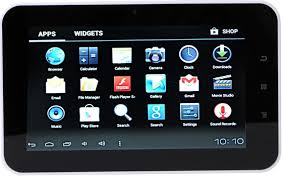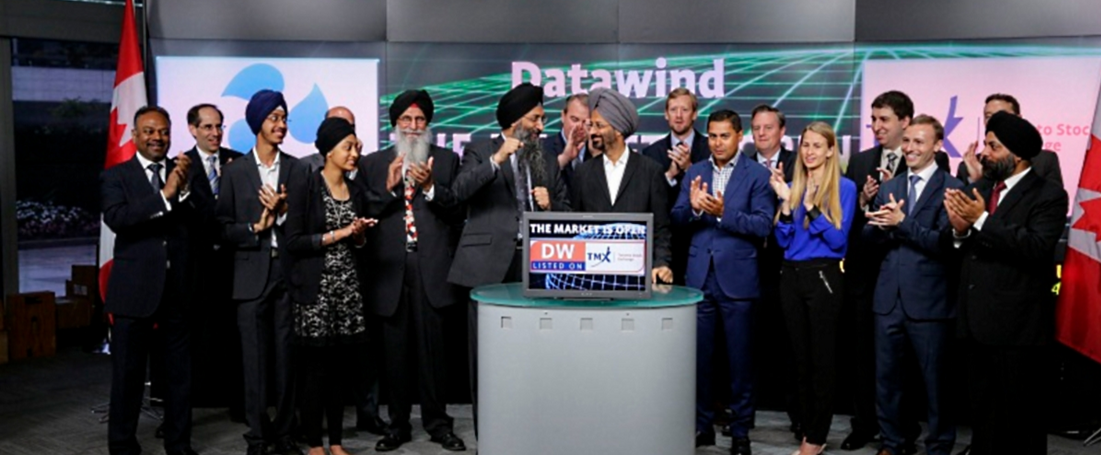
Q & A with Suneet Singh Tuli, CEO of Datawind, Ltd.
Datawind, Ltd. is a company based in the United Kingdom that seeks to “bridge the digital divide” by offering low cost platforms and devices to connect people in rural, off-the-grid regions to the internet. In 2011, Datawind formed a high-profile partnership with the Indian government to distribute their touted Aakash Tablet, now called “the cheapest tablet in the world.”
Datawind is the manufacturer of two products already featured in TEL’s database of solutions aimed at closing gaps in education and information technology: the UbiSlate7Ci Tablet; and the UbiSlate7C+ Tablet/ Smartphone. We were fortunate to be able to interview Suneet Singh Tuli, CEO of Datawind, catching him “on the fly” via Skype on his flight to London.
What inspired the creation of Datawind, and your mission of connecting the developing world to the internet?
Originally, Datawind was started because we had ideas on how to provide internet access in developing countries’ networks.
For me, at a personal level, it was about bridging the “digital divide,” which has always been a passion. I left India at the age of 8, and I didn’t have a sense of what the divisions in social classes [in Indian society] were. I realized, while growing up in Canada, that people in lower social classes would not have the same education as me.
I wanted to use technology to bridge the digital divide. You don’t need a lot of infrastructure — it is already present in India. You don’t need a lot of bandwidth. You can offer free mobile internet in [Indian] markets.
What is your business model? How do you distribute Datawind products in the countries where you work? How does Datawind find and choose recipients and customers of their products? How do you instruct new users?
We’re big believers that a sense of affordability is key. We strive to continue to lower the costs of hardware. We do sell products to governments, and we encourage them to use technology to improve the quality of education, but we also sell to consumers in these markets.
We encourage governments to help us deliver better quality education. We also sell directly to consumers through cellular phone distribution channels. In any of these places where people sell cell phones, by getting the price point down 50 points or lower, we can sell in places where people would already sell cell phones, whereas computers would cost more. We can get a broader reach by doing that.
In most countries, we first go in and pitch to the local government and advertise to them the benefits of using this technology in this manner. We then do it commercially. We advertise and offer products online. We either let [consumers] come to us or use the local government to find a channel to carry our products.
We don’t do a lot of consumer or end user training. With education, we do a lot of training to show how to integrate [Datawind products] into the curriculum. We find the interface to be so user friendly that that new users can pick up on it by playing around. The graphic arts allow for a short learning curve.
Do you partner with any other companies or organizations?
We do end up donating and helping pilot projects in the field. We try to partner with content developers and providers that focus around education. We do a lot of work with NGOs working on women's empowerment or training entrepreneurs. An example would be appstoempower.org, an effort to get people developing apps for the social good. At least a billion more people will be on the internet in the next three years as the cost lowers. These apps help the overall social good.
How did the Indian government come to recognize the potential of your Aakash tablet? What impact do you feel your products have had in India?
After a lot of effort and about 10 years of presentations, including the efforts of One Laptop Per Child, the government began to see these technologies as crucial to making improvements in the education of the children of India.
I thinks it’s early to measure our impact on education and people’s lives, but certainly we’ve seen the cost of computers in the market drop. Certainly the impact has been affordability and increased demand because of affordable prices.
I’m very confident it will help empower people in many ways, empowering people with that kind of access to the best quality education, the type that anyone has available around the world.
Do you have any favorite anecdotes about the difference your tablet or another product has made in the developing world?
There are stories of how we see NGOs deploy and sell [our products]. One of the NGOs mentors women entrepreneurs, but the challenge is, with that mission, how do you reach out and mentor? So they are using Skype and apps on our products to mentor.
What’s interesting is that if they are tablets, you start to see multiple units in the family using them. I often get asked the question, What is the right age to get started? Is there an age too young? I see them often used as pacifiers. We are going to see children growing up with access using them at a very early age.
Learn more about the Datawind tablets here.

